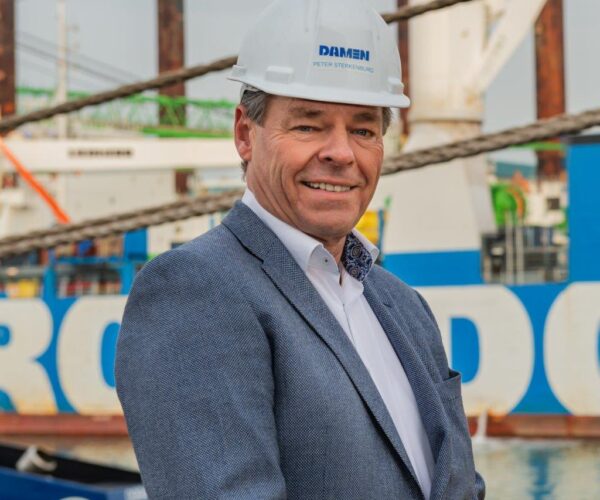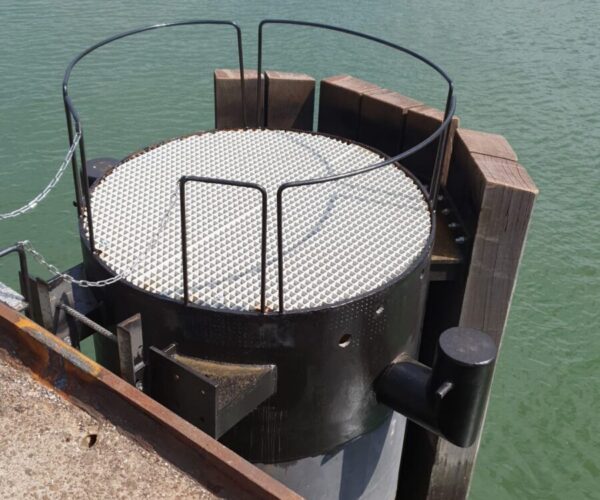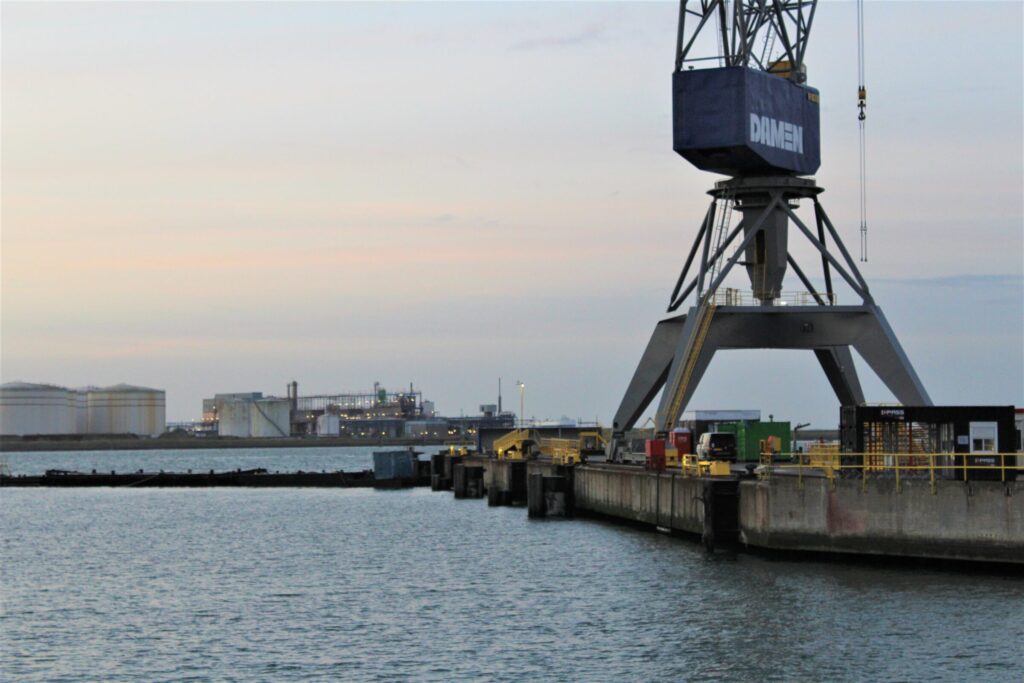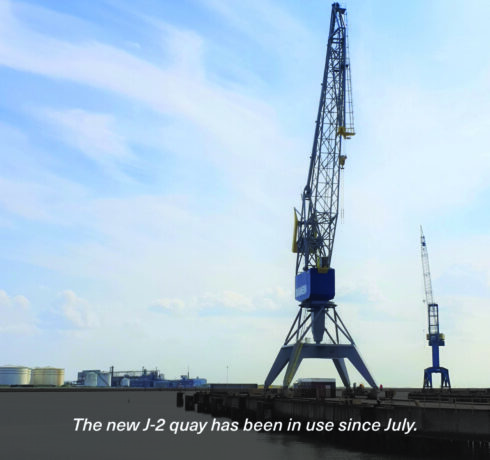Damen Shiprepair Vlissingen (DSV) is pleased with its new quay that has been operational since the beginning of July. The quay can receive ships up to 250 metres long and is centrally located on the extensive DSV site adjacent to deep water. Ships with draughts of up to ten metres, and even fifteen metres at high tide, can moor there. Because of coronavirus restrictions, the quay was put into use without any official event. “We didn’t cut a ribbon, but we did put the people who worked hard on this upgrade in the limelight during our summer barbecue,” says a satisfied Peter Sterkenburg.
 DSV Managing Director Peter Sterkenburg.
DSV Managing Director Peter Sterkenburg.
DSV sometimes has large and long-term assignments. That’s all well and good, of course, but it does mean that customers sometimes have to be disappointed because there is no quay available. Managing Director Peter Sterkenburg and Commercial Manager Michiel de Vliegher are therefore pleased that an extra quay has now been commissioned to ease the shortage of space. This became possible after the departure of the floating dry dock that was moored temporarily next to quay J. This was moved to Amsterdam last year. Because of the floating dock, quay J could only be accessed from one side, but now that the dock is no longer in the way, ships can moor on both sides.
"Every extra berth provides extra work opportunities and can result in extra turnover." Peter Sterkenburg
 Parallel to the quay, five piles were driven against which ships can moor.
Parallel to the quay, five piles were driven against which ships can moor.
The new quay has been christened J-2. Before it was put into use, various items needed to be installed. Parallel to the quay, five piles with diameters from 1.5 to 1.8 metres were driven in a single line and at the desired height, against which ships can moor. The new quay was further fitted out with wood, steel foundations for the wood, ladders, grids, railings, and was also given a lick of paint.
The project also had a sustainable touch to it. The piles were from the Vlissingen Port Authority, which no longer needed them due to an upgrade of one of its quays. “After inspection, we saw that these piles were still in excellent condition and we took them over,” says Michiel.
Quay J-2 was inaugurated at the beginning of July when semi-submersible vessel Superservant 4, from the Dockwise shipping company, delivered a Yacht Support Vessel casco to Damen Yachting. After the Superservant 4 was submerged into the water at high tide, causing the hull placed on the lower part of the ship to be submerged, the hull could be floated up. For this operation, the Dockwise ship was able to make optimum use of the water depth at the location, which is almost fifteen metres at high tide. At low tide the water here is over ten metres deep.
The advantage of this location is that the new quay is located directly within our secured yard perimeter, which meets strict international rules regarding port security. Oil and gas tankers can also moor at the quay for repair or maintenance, because DSV has a licence to handle such vessels. At the start of each project, an inspector – called the ‘gas doctor’ at DSV – verifies this.
 The quay can receive ships up to 250 metres long and is centrally located on the extensive DSV site adjacent to deep water.
The quay can receive ships up to 250 metres long and is centrally located on the extensive DSV site adjacent to deep water.
And on the new quay, immediate use can be made of the existing crane. This is a crane that was already in use at quay J-1 and is close enough to be used at quay J-2. This crane can make 360-degree turns.
Peter and Michiel are happy with the acquisition. “Every extra berth provides extra work opportunities and can result in extra turnover,” says Peter. “And it was relatively easy to realise the quay within the existing facilities. That’s another reason why the investment was easy to justify.” Construction went smoothly, adds Michiel. “From the pile-driving to the outfitting and delivery, the work took around two months.”

